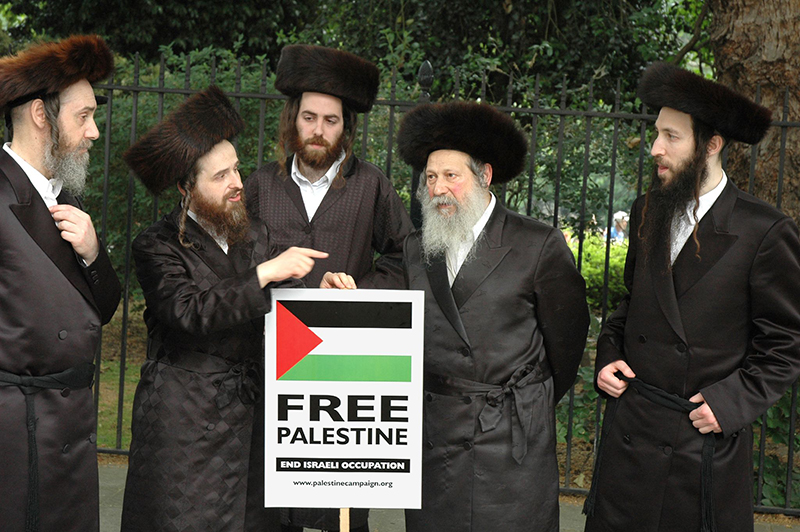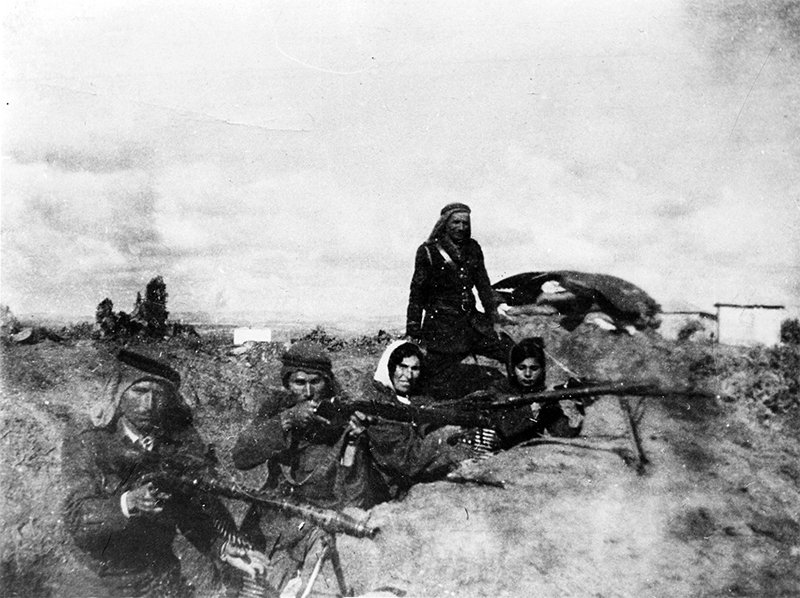Understanding the Gaza Crisis
As we try to understand the current crisis in the Middle East, we may find ourselves thinking it’s simply a matter of determining who is right and who is wrong. But there’s much more to the story.
A friend, wondering how to understand the rights and wrongs of the 2023-24 Israel-Hamas conflict, asked me for help. Knowing my background in international relations of the Middle East, she thought I might be able to give some insight. Like so many of us, she is perplexed by trying to resolve the internal conflict of horror at the brutal Hamas attack on Israeli settlements and concertgoers (including the subsequent hostage-taking and suffering) and the ferocious retaliatory response against Gaza militants and civilians by the Israeli military.
Is this simply a matter of deciding who is right and wrong, or even who is most wrong? To better understand the dimensions of this latest of many bloody confrontations between Israelis and Palestinians, we must first look back in the history of both peoples.
From the Jewish perspective, the tangled roots of today’s Middle East situation have their beginnings in exile, as well as in more recent experiences of Russian and European political and cultural life. From the Palestinian point of view, their residence in the land as a majority Arab people for many centuries, combined with their developing desire for Palestinian self-determination, sovereignty and peace, demands justice and fair treatment.
Setting the Scene
We begin with some data points in Jewish history.
The capture and destruction of Jerusalem and the land of ancient Israel by the Babylonians led to an extended period of Jewish exile on the Euphrates (605–539 BCE). Since then, the exiles’ oath has often been spoken in other times of national loss: “If I forget you, O Jerusalem, let my right hand forget its skill! If I do not remember you, let my tongue cling to the roof of my mouth—if I do not exalt Jerusalem above my chief joy” (Psalm 137:5–6). Though many Judeans returned from Babylon under the Persian king Cyrus and reestablished society, religion and culture, the subsequent first-century Roman conquest and destruction of Jerusalem deepened the experience of catastrophic loss. Within a few decades, during the reign of Emperor Hadrian, Jews were banned entirely from Jerusalem. To this day, in memory of this loss, the Jewish community in the Diaspora has annually repeated to itself, “Next year in Jerusalem!” at two of Judaism’s religious convocations, the Passover and the Day of Atonement. This deep-seated passion for land and capital, born of guilt and grief, is but one factor in Jewish-Israeli consciousness.
Another element in understanding the origins of the current impasse is the 19th-century history of Russian anti-Semitism. Rumors that Jews had carried out the assassination of Tsar Alexander II in 1881 brought on widespread pogroms in the southern and western Russian empire (the Pale of Settlement, where Jews lived under varying degrees of restriction). The level of local hostility, including rape and theft (often abetted by police and state authorities), accelerated Jewish efforts to create a safe national home. Added to this, 18th-century European ideas of nationalism and national identity encouraged new ways of thinking.
Is Anti-Zionism the Same As Anti-Semitism?
The form of Zionism that emerged in the 1880s aimed to resolve the problem of anti-Semitism in Central and Eastern Europe. It did so by helping relocate those Jews who wished to emigrate to a land of their own. The long-term goal of political Zionism was the establishment of a state where Jews could live freely under their own government.
Once that became a possibility in Palestine, opposition to the project—known as anti-Zionism—was a natural response for some. Opponents included both Palestinians and Jews. For example, many ultra-Orthodox Jews did not regard the Zionist project nor the founding of the state of Israel in 1948 as legitimate. Their belief was that only the Messiah could reestablish Israel in its ancient land. They were clearly opposed to Zionism, but obviously their stance does not make them anti-Semitic.
The dictionary definition of anti-Semitism is “hostility to or prejudice against Jewish people.” Criticism of aspects of Zionism does not, however, equate to anti-Semitism any more than criticism of aspects of Palestinian or American politics is anti-Palestinian or anti-American. According to the American Jewish Committee, a working definition of anti-Semitism used by many governments “explicitly notes that legitimate criticism of Israel is not antisemitism: ‘Criticism of Israel similar to that leveled against any other country cannot be regarded as antisemitic.’” Journalist Abraham Gutman put it this way in a 2021 essay: “Historically, criticism of the Israeli government has been linked to antisemitism. But it’s not nearly that simple. By conflating Judaism and Israel, the Israeli government created a paradox in which Israel’s actions are beyond critique.”
What does constitute a form of anti-Semitism is the rejection of the Jewish people, wherever they are in the world, and their right to peace and security. The destruction of any ethnic group (or their land)—whether Jewish, Palestinian or any other—stems from hatred, intolerance and self-interest, and it must never be condoned.

A group of ultra-Orthodox Jewish men protest against Israel’s occupation of Palestine (June 2005).
Peter, CC BY 2.0, via Wikimedia Commons
These developments coincided with an upsurge in interest in culture and language among the roughly 5 million oppressed Jews in the Pale. Among them were the families of several who would become leaders in the Jewish community in Palestine both before its independence and in the postindependence state of Israel, including David Ben-Gurion, Vladimir Jabotinsky, Golda Meir, Shimon Peres, Menachem Begin and Yitzhak Shamir.
Many who made the journey to Palestine were told the falsehood that they were a people without a land destined for a land without people. Yet many Jews lived freely in European countries and had assimilated there, while Palestine—with a population numbering in the hundreds of thousands—was prospering as a rural agricultural community under Turkish Ottoman rule.
Another factor in support of a homeland for the Jewish people was the belief among some influential European Christians, beginning around 1840, that the return of Jews to their ancient land would hasten the return of Christ. This religious component would inform those 19th- and 20th-century British and American political leaders who were instrumental in the eventual creation of a Jewish state. The political philosophy that came to underlie the effort was Zionism (Zion being a biblical name for Jerusalem).
“Theologians who studied the Bible and evangelical archeologists who excavated ‘the Holy Land’ welcomed the settlement of Jews as confirming their religious belief that the ‘Jewish return’ would herald the unfolding of the divine promise for the end of time.”
In the latter years of the 1800s, Palestinian interest in national identity also made itself known. Palestine had been ruled by the Ottomans since 1516. Leading families or notables had arisen in Jerusalem, some becoming representatives in the Ottoman Parliament in Constantinople (now Istanbul). Palestinian-American historian Rashid Khalidi writes that Jerusalem was a significant element in the development of Palestinian identity in terms of “the construction of modern national consciousness.” He notes that around the turn of the 20th century, “parochial loyalties served as the bedrock for an attachment to place, a love of country, and a local patriotism that were crucial elements in the construction of nation-state nationalism.”
War and Peace War
At the beginning of the 20th century, without willingness to recognize the need for equitable coexistence, these two peoples were set on a collision course—an inevitable clash between political Zionism and the established Palestinian presence.
Of course, there is much more to the story.
Anticipating victory in the First World War, Britain and France (with the consent of Russia and Italy) signed the secret Sykes-Picot Agreement (1916), plotting to divide Middle Eastern Ottoman territories between them. As colonial powers, they were interested in access to Gulf oil; pipelines and railways across the desert; and in the case of Britain, the Suez Canal, the gateway to British India. The Arab world was shocked when the secret agreement was laid bare. But the British level of deceit was compounded when, at the same time (1915-16), they also secretly agreed with the Hashemite leader Hussein, sharif of Mecca, to install him as a dynastic ruler in Syria in return for an Arab uprising against Ottoman forces. The British had promised the same territory to two different parties, hoping to muddle through the consequences once the war was over. But in what amounted to a betrayal, the French were allowed to force Hussein’s son Faisal from Damascus, where he had established the Arab Kingdom of Syria.
Adding to the complexity, in late 1917 the British entered Jerusalem and assumed the military occupation of Palestine. The British revealed their hand when they opted for a pro-Zionist position and issued the Balfour Declaration in support of a homeland for the Jewish people in Palestine.
These labyrinthine events have proven central to the situation in the Middle East to this day. The legacy is one of distrust, conflicting and broken promises, great-power self-interest, and shockingly uneven treatment of the Palestinian people.

The Arab revolt in Palestine (1936–1939) was motivated by opposition to mass Jewish immigration allowed by the British Mandate.
hanini, public domain, via Wikimedia Commons
Following the war, on the basis of the Sykes-Picot agreement, the League of Nations granted Britain and France mandates to help the local populations achieve self-government. France would be responsible for Lebanon and Syria, and Britain would administer Palestine, Transjordan and Mesopotamia. While Lebanon, Syria, Jordan and Iraq gained independence by 1946, the situation in Palestine was complicated by Britain’s pro-Zionist position and the resistance of the Palestinian population to Jewish immigration and British rule.
In 1948, when the British formally returned the mandate to the newly formed United Nations and the Palestinians rejected the UN partition proposal (in part because they’d had no input), the Jewish Agency declared the State of Israel. Fighting ensued, followed by an armistice resulting in the division of territory between the forces of Israel, Jordan and Egypt. Israel gained 78 percent of British mandate territory; East Jerusalem and the West Bank were placed in Jordanian hands, where they remained until the Six-Day War of 1967; and Egypt held the Gaza Strip from 1949 to 1967, with a one-year interlude in 1956 during the Suez Crisis.
The 1948 war, in which surrounding Arab armies invaded Israel and Palestine, saw not only the unequal division of land but also, in the words of Israeli historian Ilan Pappe, “the expulsion of half of Palestine’s population, demolishing half of its villages, and emptying and destroying eleven of its twelve towns.”
“Violence breeds violence. Acts of violence committed in ‘justice’ or in affirmation of ‘rights’ or in defense of ‘peace’ do not end violence. They prepare and justify its continuation.”
According to Pappe, the military campaign known as Plan D was conceived as a way for Israel to resolve its Palestinian “problem.” About 800,000 Palestinians were suddenly forced to flee and live in refugee camps, many in the Gaza Strip. Now under Egyptian control, the dispossessed were not allowed to become Egyptian citizens, nor to migrate to Egypt or any other Arab country, nor to return to Israel or be compensated. As a result, many young members of the refugee camps became active in guerilla operations against Israel.

Fighters of the Israeli Shaked Patrol in Sinai during the Six-Day War, June 1967. Unit commander Amos Yarkoni sits in the Jeep commander’s chair, behind the machine gun.
Rafi Rogel (רפי רוגל), via Wikimedia Commons
In 1967 Israel won the Six-Day War and took military control of Gaza for the next 25 years. In 1987 the “intifada” (Arabic: intifadah, “shaking off”) broke out as Gaza Palestinians rioted and fought Israeli troops. This was the year that Hamas formed as a charitable and political organization under the Islamic cleric Sheikh Ahmed Yassin. A member of the Muslim Brotherhood in Gaza, Yassin had been made a refugee along with his family in 1948. Hamas was seen as a religious alternative to the secular Palestine Liberation Organization (PLO), whose efforts had produced so little by way of freedom. It’s thought that Israel encouraged the group as a counterbalance to the national secular factions.
Under Yassin, Hamas was involved in a number of attacks on Israeli soldiers and settlers, including suicide bombings within Israel. In response, the Israeli military imposed very harsh punitive actions, expelling many activists through 1992. Yassin himself was arrested and sentenced to life in prison in 1989 but released in an exchange deal in 1997 and assassinated by Israel in 2004. Since then, Hamas has continued its opposition to Israel, led by Ismail Haniyeh (assassinated in Iran in July 2024), Mohammed Deif (claimed by Israel to also have been assassinated in July 2024) and Yahya Sinwar.
Who Is More Wrong?
This partial history gives some context to Hamas’s premeditated horrific murderous attack on 1,200 soldiers and civilians in southern Israel on October 7, 2023. Of the more than 250 taken hostage, at time of writing 117 have been freed, 72 are known to be dead, and 97 remain in Gaza (this figure includes the bodies of more than 30 of the deceased). Those released, and the medical staff who have treated them, have reported cases of poor hygiene; malnutrition; mental, physical, emotional and sexual abuse; and lack of medicines to treat preexisting conditions.
The ongoing Israeli military response has been ferocious and retaliatory. With regard to Palestinian deaths in Gaza, the medical journal The Lancet notes, “Applying a conservative estimate of four indirect deaths per one direct death to the 37 396 deaths reported, it is not implausible to estimate that up to 186 000 or even more deaths could be attributable to the current conflict in Gaza. Using the 2022 Gaza Strip population estimate of 2 375 259, this would translate to 7.9 percent of the total population in the Gaza Strip. A report from Feb 7, 2024, at the time when the direct death toll was 28 000, estimated that without a ceasefire there would be between 58 260 deaths (without an epidemic or escalation) and 85 750 deaths (if both occurred) by Aug 6, 2024.”
While the history of retribution from both sides might persuade observers to conclude that the record of death and destruction is indeed not a matter of right or wrong but of who is more wrong, even this conclusion will not be enough to take us forward. Wendell Berry reminds us, “It is useless to try to adjudicate a long-standing animosity by asking who started it or who is the most wrong. The only sufficient answer is to give up the animosity and try forgiveness, to try to love our enemies and to talk to them and (if we pray) to pray for them. If we can’t do any of that, then we must begin again by trying to imagine our enemies’ children who, like our children, are in mortal danger because of enmity that they did not cause.”
It’s interesting to consider that so many of the key players in this long crisis were/are connected in some way as “people of the Book.” Whether Jewish, Christian or Muslim, they make a claim to Abrahamic origins. But as the Book says, Abraham was “the friend of God,” whose way is loving, serving and conciliatory.
In the search for peace and reconciliation, we can do no better than to follow that way.

